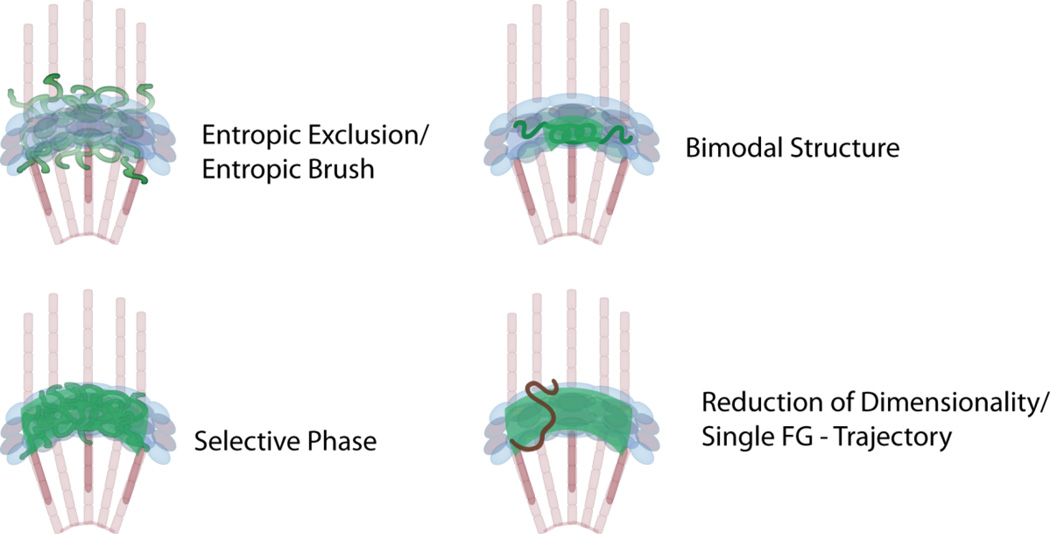Figure 2.
Nuclear pore complex transport models. In the entropic exclusion/entropic brush model the FG-Nups organize as a repulsing entropic barrier against non-specific cargo. Transport receptors mediate interaction of cargo complexes with this barrier thereby facilitating transport. In the selective phase model the FG-Nups form a physical gel-like barrier by dense FG–FG interaction. Transport receptors locally “melt” the gel allowing entrance and transition. In the bimodal structure model FG-Nups fold into different zones within the central channel resulting in a more gel-like center with less dense peripheries. This model predicts different spatial routes for different cargo translocation. The reduction of dimensionality model predicts that FG-Nups coat the wall of the central channel allowing for transport receptors to “slide” on a 2-dimensional surface across the NPC. The single trajectory hypothesis can be easily pictured as a discreet path across such a landscape but applies to all models presented.

